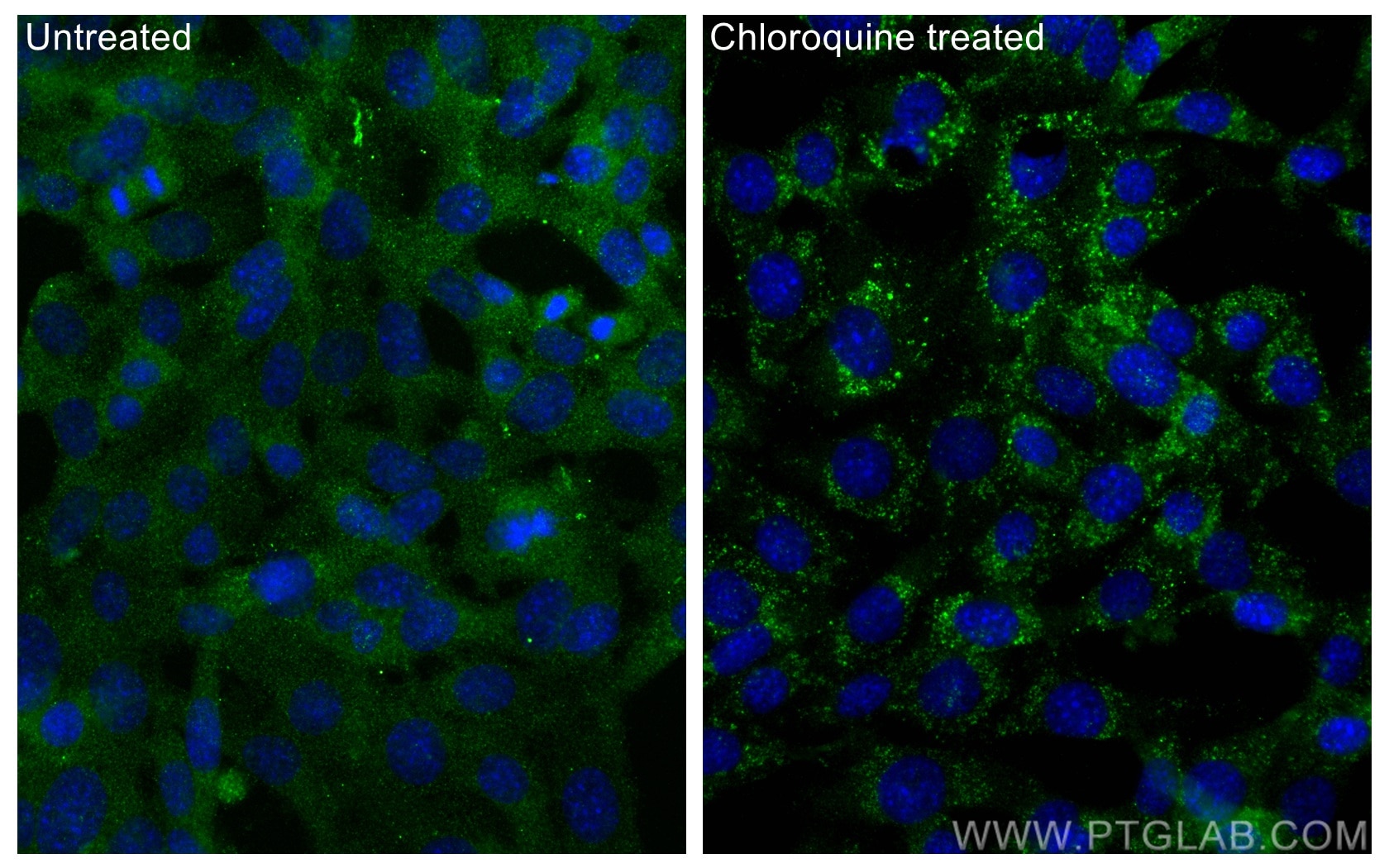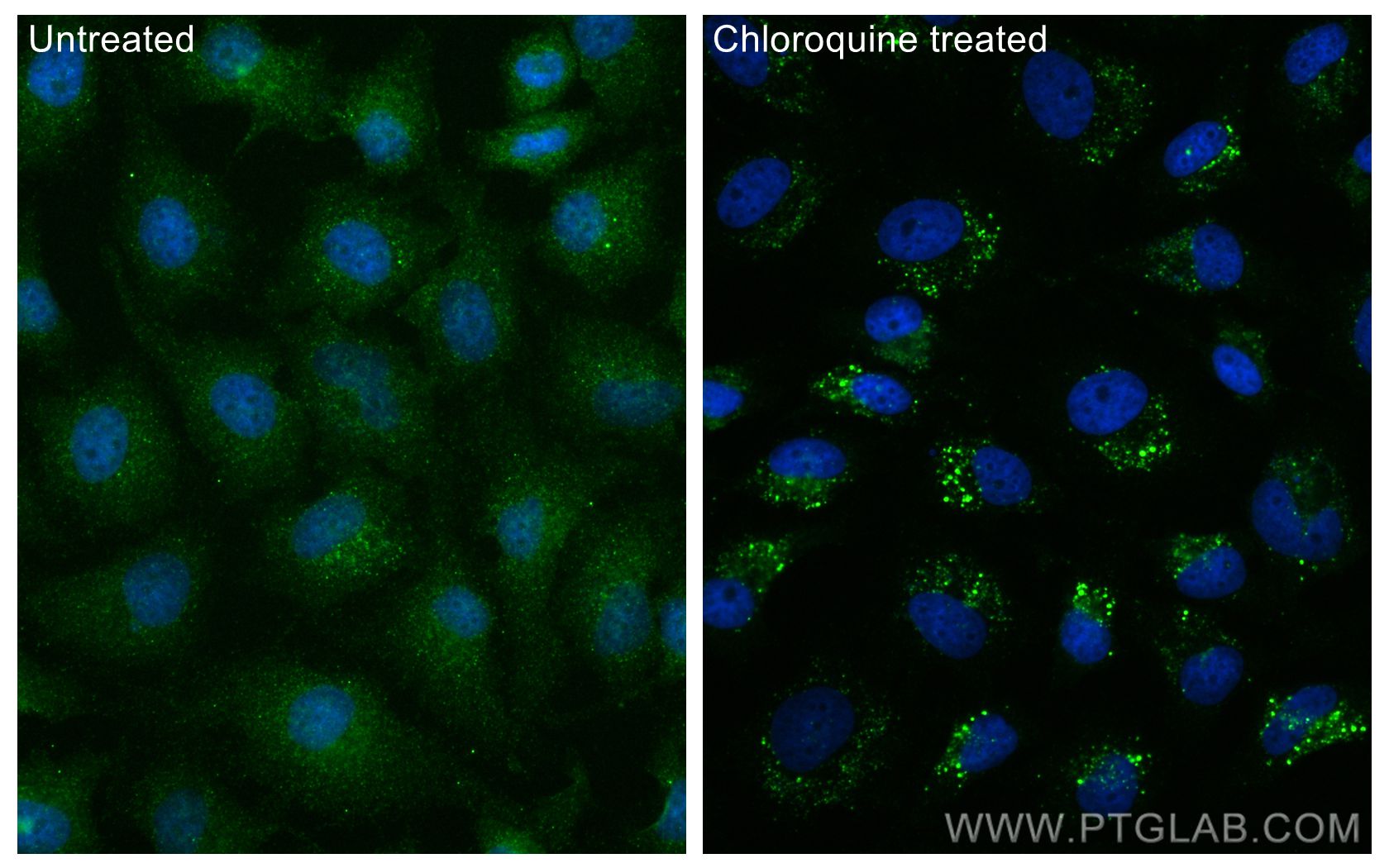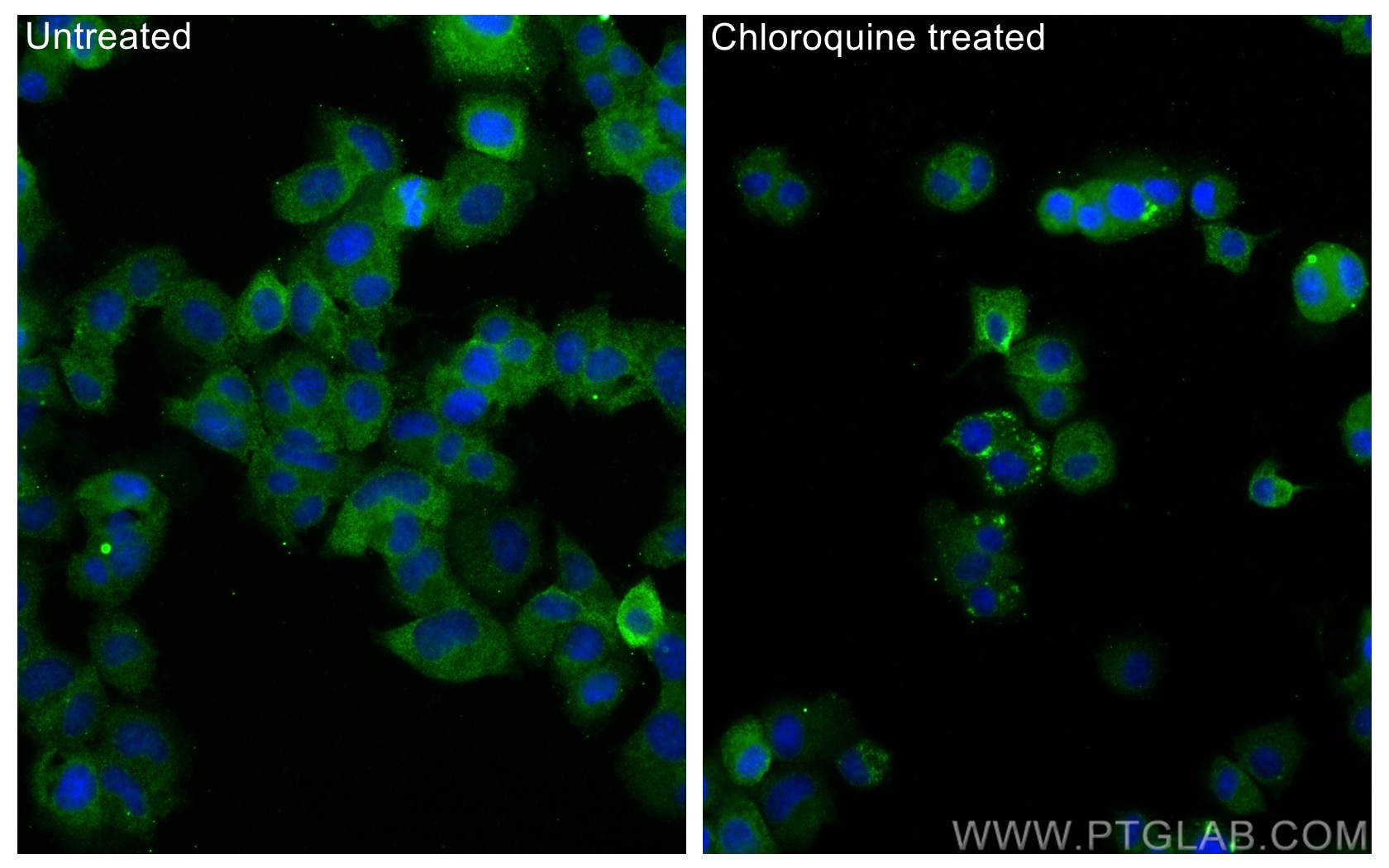Product Information
66139-3-PBS targets LC3 in IF/ICC, Indirect ELISA applications and shows reactivity with human, mouse, rat samples.
| Tested Reactivity | human, mouse, rat |
| Host / Isotype | Mouse / IgG1 |
| Class | Monoclonal |
| Type | Antibody |
| Immunogen |
CatNo: Ag17959 Product name: Recombinant human MAP1LC3A,LC3 protein Source: e coli.-derived, PET28a Tag: 6*His Domain: 1-121 aa of BC015810 Sequence: MPSDRPFKQRRSFADRCKEVQQIRDQHPSKIPVIIERYKGEKQLPVLDKTKFLVPDHVNMSELVKIIRRRLQLNPTQAFFLLVNQHSMVSVSTPIADIYEQEKDEDGFLYMVYASQETFGF Predict reactive species |
| Full Name | microtubule-associated protein 1 light chain 3 alpha |
| Calculated Molecular Weight | 121 aa, 14 kDa |
| GenBank Accession Number | BC015810 |
| Gene Symbol | LC3 |
| Gene ID (NCBI) | 84557 |
| Conjugate | Unconjugated |
| Form | Liquid |
| Purification Method | Protein G purification |
| UNIPROT ID | Q9H492 |
| Storage Buffer | PBS only, pH 7.3. |
| Storage Conditions | Store at -80°C. |
Background Information
LC3A, also named as MAP1LC3A, LC3, MAP1ALC3 and MAP1BLC3, belongs to the MAP1 LC3 family. LC3A is one of the light chain subunits and can associate with either MAP1A or MAP1B, which are microtubule-associated proteins that mediate the physical interactions between microtubules and components of the cytoskeleton. In cell biology, autophagy, or autophagocytosis, is a catabolic process involving the degradation of a cell's components through the lysosomalmachinery. It is a major mechanism by which a starving cell reallocates nutrients from unnecessary processes to more-essential processes. Two forms of LC3, called LC3-I (17-19kd) and -II(14-16kd), were produced post-translationally in various cells. LC3-I is cytosolic, whereas LC3-II is membrane bound. The precursor molecule is cleaved by APG4B/ATG4B to form the cytosolic form, LC3-I. This is activated by APG7L/ATG7, transferred to ATG3 and conjugated to phospholipid to form the membrane-bound form, LC3-II. The amount of LC3-II is correlated with the extent of autophagosome formation. LC3-II is the first mammalian protein identified that specifically associates with autophagosome membranes. (PMID:11060023) MAP1LC3 has 3 isoforms MAP1LC3A, MAP1LC3B and MAP1LC3C. MAP1LC3A and MAP1LC3C are produced by the proteolytic cleavage after the conserved C-terminal Gly residue, like their rat counterpart, MAP1LC3B does not undergo C-terminal cleavage and exists in a single modified form.(PMID:12740394 )








